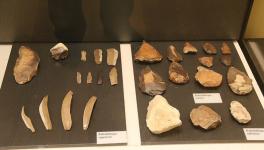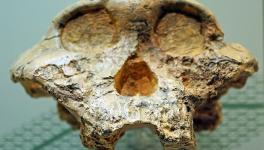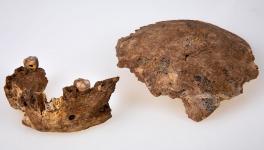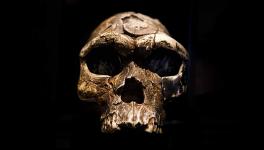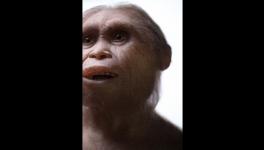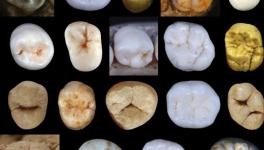How Old Could Homo Sapiens be Outside of Africa?
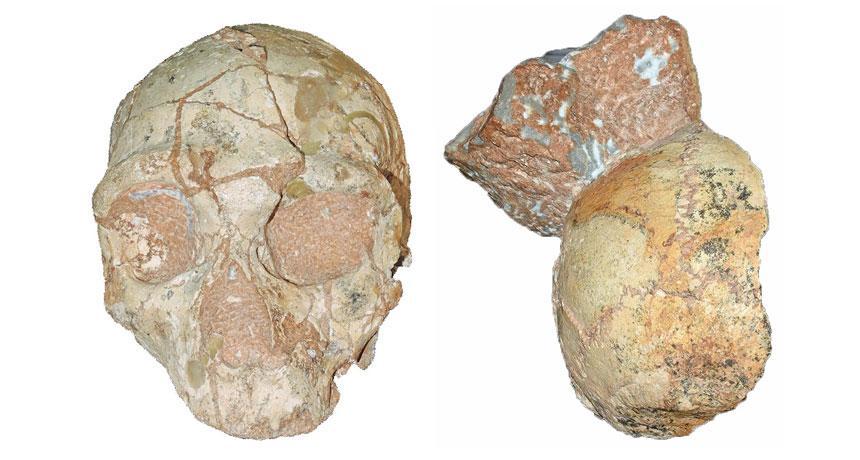
Image Courtesy: Science News.
What we are today— Homo sapiens, originated in Africa nearly 3 lakh years back. But humans migrated out of Africa in varying numbers at different times and inhabited different parts of the world. But, the question that when did humans first start migrating out of Africa still attracts new researchers, leading to newer newer findings from time to time.
A new study published in Nature on July 10, 2019, sheds new light on the oldest Homo Sapien fossils outside Africa. The study says that a skull found in Apidima Cave from 1978, a Cliffside cave on Greece’s southern coast, represents the oldest Homo Sapiens outside Africa.
The skull is believed to be of an individual who lived at least 2,10,000 years ago in Greece and was recovered as a fossil encased in a rock in the Cliffside cave. That rock also held a Neanderthal skull which dates back to at least 1,70,000 years ago.
With this latest report, it has become clear that the skull is more than 1,60,000 years older than the earlier reported oldest European Homo Sapiens. It is also older than the proposed H. sapiens jaw found in Misliya Cave in Israel, which dates to 1,77,000 to 1,94,000 years ago.
Katerina Harvati, the lead author of the study published in Nature and who is a paleoanthropologist at the University of Tubingen, Germany, was quoted as saying, “Multiple Homo Sapiens populations dispersed out of Africa starting much earlier, and reaching much farther into Europe, than previously thought.”
A small group of humans might have migrated out of Africa and reached, what is now known as Greece, more than two lakh years ago. Neanderthals that were settled in southeastern Europe- not very long after this human migration, may have replaced those early H. sapiens. But then again, humans arriving in Mediterranean Europe thousands of years later, would have eventually replaced those Neanderthals that went extinct some 40,000 years ago.
But the latest findings, in no way, can exclude the possibility that H. sapiens and Neanderthals coexisted in southeastern Europe more than 2 lakh years ago and occasionally interbred also. Previous studies have shown that H. Sapiens most likely mated with European Neanderthals at that time.
The two skulls were held in a small section of the wall that had washed into Greece’s Apidima Cave from a higher cliff sediment and then had solidified roughly 150,000 years ago. The researchers say that since one skull is older than the other, each must have originally been deposited in different sediment layers before ending up about 30 centimetres apart on the cave wall.
Harvati’s team deciphered that the two skulls recovered from the Apidima cave belong to two different species which are Neanderthals and Homo Sapiens. The Neanderthal skull retained the face and much of the brain case, but fossilisation and sediment pressure distorted the skull’s shape. Based on their 3D reconstructions of the specimen, the team concluded that its heavy brow ridges, sloping face and other features indicated that it is a Neanderthal skull, rather than ancient and modern human skulls. The analysis of the decay rate of radioactive forms of uranium in the skull bone fragments suggested that the age of the Neanderthal skull is about 1,70,000 years old.
The other skull’s fossil was also dated using uranium decay analysis and suggested that its age is about two lakh years. The digital reconstruction of the skull revealed that it is round shaped- suggesting it as a Homo Sapiens’s skull.
Paleoanthropologist Israel Hershkovitz of Tel Aviv University- whose team discovered the Misliya cave jaw and assigned it to a Homo Sapiens jaw, says, “it is still possible that both Apidima skulls are Neanderthals’.”
As the next step and for better confirmation, Harvati’s team has planned to extract DNA and species with distinct proteins from the Greece skulls, for specific determination of their evolutionary identities and also to search for interbreeding between humans and Neanderthals.
Get the latest reports & analysis with people's perspective on Protests, movements & deep analytical videos, discussions of the current affairs in your Telegram app. Subscribe to NewsClick's Telegram channel & get Real-Time updates on stories, as they get published on our website.









